Critical analysis of the leadership and role of the European External Action Service within the European Union.
“All states are equal, but some are more equal than others.” This famous expression perfectly describes relations among European Union Member States and its institutions. The newly created European External Action Service (EEAS) is no exception. In theory, the EEAS was supposed to answer Henry Kissinger’s question, “What is the phone number of Europe?” The EEAS was to enable the EU to speak with one voice on the international stage in foreign and security questions. However, the powerhouses of Europe – Berlin, London and Paris – remain the main drivers of EU foreign and security policy, relative to other EU Member States.
Since the 1992 Treaty of Maastricht, the EU has legally played a role in the field of foreign and security policy through the creation of the Common Foreign and Security Policy (CSFP). Decision-making in foreign and security policy has since been based on intergovernmentalism, meaning that unanimity is necessary to activate a foreign policy. In December 2009, the Treaty of Lisbon was adopted leading the way for the creation of the EEAS, also called the European diplomatic service. The EEAS is led by the High Representative (HR) for Foreign Affairs and Security Policy, Baroness Catherine Ashton, who was appointed by the European Council following the entry into force of the Treaty in 2009.
As was the case with the CFSP, Member States are still the principal drivers of EU foreign policy. The process of launching a Common Security and Defense Policy (CSDP) mission, either military or civilian in nature, or of establishing diplomatic and political ties with a third country consists of a complex process of meetings between the 27 officials of Member States plus EU officials. Since the creation of the CFSP and now the EEAS, the dilemma has been to find an equilibrium among Members’ foreign policies that still empowers the EU itself.
The distribution of power among Member States is unequal. The original six – France, Belgium, Germany, Italy, Netherlands, Luxemburg – plus the UK hold an unwritten superiority over the other Member States, especially the ten new ones. The roots of this imbalance are explained by two factors. First, France and the UK hold prestigious seats in international organizations, such as the United Nations Security Council, the International Monetary Fund, and NATO’s command structure. Second, the history of France and the UK on the world stage provides them a certain cachet.
In recent years, the balance of power has evolved among the 27 Member States. In questions of foreign policy, we can identify three groups. The first and most influential is composed of the Big Three – France, Germany, and the UK – whose voices push policies towards a specific agenda. The second group is composed of middle-sized powers, including especially Italy, Poland, Spain, and the Netherlands. In recent years, these middle-sized powers have been making a strong push to influence the EEAS’s policy- and decision-making process. They have become more assertive and have been seeking more political weight. For example, Poland’s position has shifted the last two years from pro-American to much more pro-European. Middle-sized powers are also trying to influence EU foreign policy by playing the role of a gateway to a specific region, or a driver on a specific issue, wherein they have unique historical, cultural and economic competence. Spain, for example, has offered the EU access to Latin America. The last group, composed of smaller-sized powers, has limited influence on policy-making. Their strategy within the EEAS is based on bandwagoning with middle-sized powers and/or one of the ‘Big Three.’ Bandwagoning is often established based on historical lines and connections.
History of EEAS
The EEAS became operational on December 1, 2010, following a year of drafting led by HR Ashton. Based on the treaty, the EEAS shall assist the HR and work with national diplomatic services as well as certain departments of the General Secretariat of the Council and Commission. The new diplomatic service integrates the Commission’s former delegations as well as its Directorate General of External Relations (DG RELEX). It is staffed by officials from the Commission, Council Secretariat and national civil servants. The EEAS is an autonomous institution of the EU, composed of a central administration and EU delegations in third countries and international organizations.
The appointment of Lady Ashton as the High Representative coincided with considerable criticism over the amount of time it took to design the new EEAS. However, HR Ashton’s mandate to design an entirely new structure was dantesque. Indeed, it took a year after the entry into force of the Treaty of Lisbon for the EEAS to become operational.
Appointment of top officials
Member States had very little interest in the creation of the EEAS until the appointments began. Soon, the appointment process, which was supposed to be based on competition and merit, gave way to political influence.
Even the appointment of Lady Ashton was a symbol of the power and influence of Member States. Following ten years of leadership by Javier Solana as the High Representative for the CFSP, Member States felt that a stronger institution should be counter-balanced by weaker leadership. Ms. Ashton fit the job description: she is a British national (one of the ‘Big Three’), but has very limited experience in foreign policy. She is even referred to as the “accidental diplomat.”
Her approach has been largely that of an administrator. She undertook the difficult task of designing the European External Action Service. However, since 2010, she has been criticized for her lack of style and vision in negotiation, diplomacy, and politics. Critics have underlined her inability to lead the EU on strengthening its voice, rank, and role in the global arena. Her absence during the Arab revolutions in Tunisia, Egypt, Libya, and now Syria has been costly for the reputation of the EEAS and her administration.
While Mr. Solana was all about politics, HR Ashton has been all about institutional design. Solana’s approach was to consult first with the ‘Big Three,’ then the rest of the Union. Predictably, Solana’s approach met with considerable criticism from less influential Member States, but experts have stressed that it made sense to consult the powerful first. In the words of one French expert, “who pays decides!” In contrast, HR Ashton has tried to protect herself by claiming “unless I receive a clear order from a unanimous decision from the 27, I will wait.”
Some have been skeptical of the British within the EEAS, suspecting that Lady Ashton remains in the job only because of the Tories, who tried to block the Lisbon Treaty, but are happy to “have an incompetent” as foreign minister. “The Conservatives opposed the creation of an EU foreign service but they support her. That makes us suspicious,” said a diplomat. Furthermore, as underlined by British Secretary of State for Foreign and Commonwealth Affairs, Mr. Hague, “It is true that we in the Conservative Party were not persuaded of the case for the new EEAS as a service, but its existence is now a fact. Part of our critique of the Lisbon treaty was that rather than making the EU more streamlined and efficient, its new arrangement of the EU’s structures held the potential for inter-institutional confusion and discord.”
In early August 2011, HR Ashton appointed 25 new heads of EU delegations around the world as part of the rotating appointment process. As underlined by the treaty, the appointees are either individuals from the Member States, the EEAS, or the European Commission. However, the majority of the prestigious posts, such as the UN, India, Turkey, DRC, Japan, and the WTO, went to national diplomats. EEAS representatives landed in ‘second-ranked’ delegations with the exception of the EU delegation to Italy. France, Italy, and the UK ended up with the largest numbers of national diplomats appointed.
Power relations on the 2010 ruling of the International Court of Justice
The case of Kosovo illustrates the power relations among EU Member States on sensitive international questions as well as their inequality in policy-making. On July 22, 2010, the International Court of Justice ruled on Kosovo’s 2008 unilateral declaration of independence from Serbia. The ruling read that the unilateral declaration did not violate international law. However, the Court did not pronounce judgment on the question of Kosovo’s independence and its status as a nation-state. A majority of EU Member States recognizes the independence of Kosovo; exceptions are Spain, Slovakia, Romania, Cyprus, and Greece, which are all facing domestic secessionist movements. The dynamic at the United Nations among the 27 EU Member States illustrates this split. The most vocal Member State from the anti-independence group was Spain, which underlined its position and the possible precedent that it could engender domestically. On the same day, HR Ashton declared in the name of the 27 that “the focus should now be on the future. The future of Serbia lies in the European Union. The future of Kosovo also lies in the European Union.” This statement, previously approved by each European capital, created a split within the Union as it put Kosovo and Serbia on equal ground. It especially infuriated the representatives of Cyprus and Greece. The feeling was that Paris, London, and Berlin’s political weight ultimately pushed the other Member States to agree on the declaration.
Conclusion
The very name of this new institution, European External Action Service, is difficult to grasp as it means everything and nothing. Member States would have opposed any new institution with a name like European Union Foreign Service or European Union Diplomatic Ministry, as it would have symbolically overlapped with their own ministries of foreign affairs and ultimately undermined them. France and the UK have historically been active foreign policy actors seeking to maintain their status as mid-sized powers on the international stage. In this time of economic crisis, one might expect further integration, but in the field of security and foreign policy it has not occurred. The case of Libya is a perfect illustration of this point, as France and the UK completely bypassed and ignored the EU’s institutions in favor of NATO. The EEAS and HR Ashton have been largely absent with respect to Libya and even on the previous Arab revolutions.
Two points need to be underlined. First, even though the EEAS enjoys a certain autonomy, its success is undeniably linked to the political will and commitments of the Member States, especially the “Big Three.” Second, HR Ashton needs to take more political risk in order to increase the relevance and influence of the EEAS on the international stage. Designing the EEAS was one part of the job; utilizing it is another. The Arab revolutions offered a missed opportunity for the EEAS to prove its value and unite the 27 Member States behind a single voice.
The EEAS is a young institution in the process of shaping its own diplomatic culture. However, it is influenced by 27 other diplomatic cultures, some more influential and active than others. It will take time to see the emergence of a balanced European diplomatic culture. Right now, it is a zero-sum game for each Member State to have a greater influence on the building of the EEAS. The shaping of the EEAS is at a crucial juncture. Should the EEAS solely deal with diplomacy and become a civilian international actor or should the EEAS play a role in military issues? Based on the Libyan case, it appears that France and the UK would rather work bilaterally on a case-by-case basis and/or utilize NATO, a position that could have considerable impact on the strategic and diplomatic culture of the EEAS.
The next major diplomatic challenge for the EEAS will be around the UN General Assembly’s vote on Palestine’s status as a nation-state. The EU’s vote might show that Member States could not agree on one position or might show EU Member States’ unity behind the EEAS. The EEAS’s primary function will be to avoid an internal split, and then express a common position. Will the EEAS act as an autonomous actor? Or will it be at the mercy of the powerhouses of Europe? The Palestinian issue could be critical for the future of the EEAS.
Support Fair Observer
We rely on your support for our independence, diversity and quality.
For more than 10 years, Fair Observer has been free, fair and independent. No billionaire owns us, no advertisers control us. We are a reader-supported nonprofit. Unlike many other publications, we keep our content free for readers regardless of where they live or whether they can afford to pay. We have no paywalls and no ads.
In the post-truth era of fake news, echo chambers and filter bubbles, we publish a plurality of perspectives from around the world. Anyone can publish with us, but everyone goes through a rigorous editorial process. So, you get fact-checked, well-reasoned content instead of noise.
We publish 2,500+ voices from 90+ countries. We also conduct education and training programs
on subjects ranging from digital media and journalism to writing and critical thinking. This
doesn’t come cheap. Servers, editors, trainers and web developers cost
money.
Please consider supporting us on a regular basis as a recurring donor or a
sustaining member.
Will you support FO’s journalism?
We rely on your support for our independence, diversity and quality.


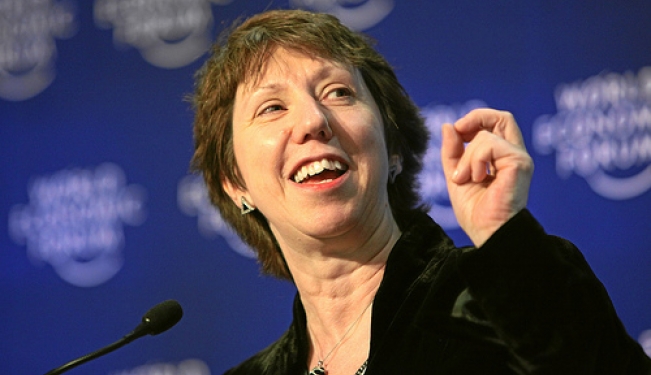
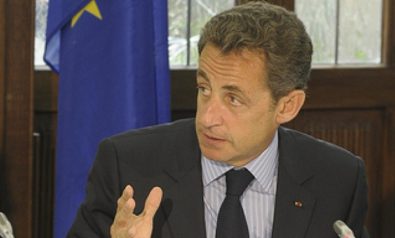
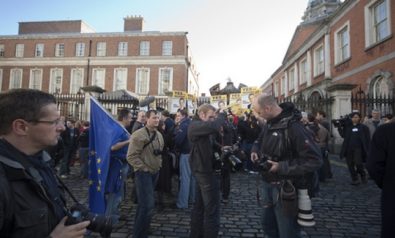
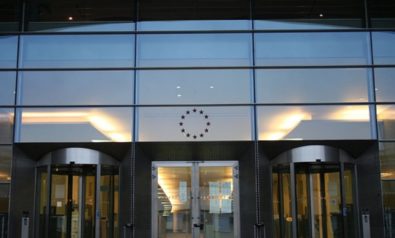
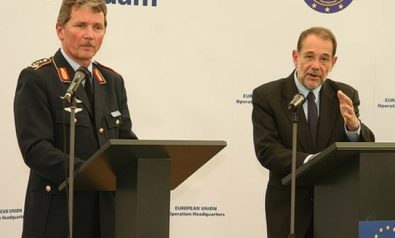






Comment